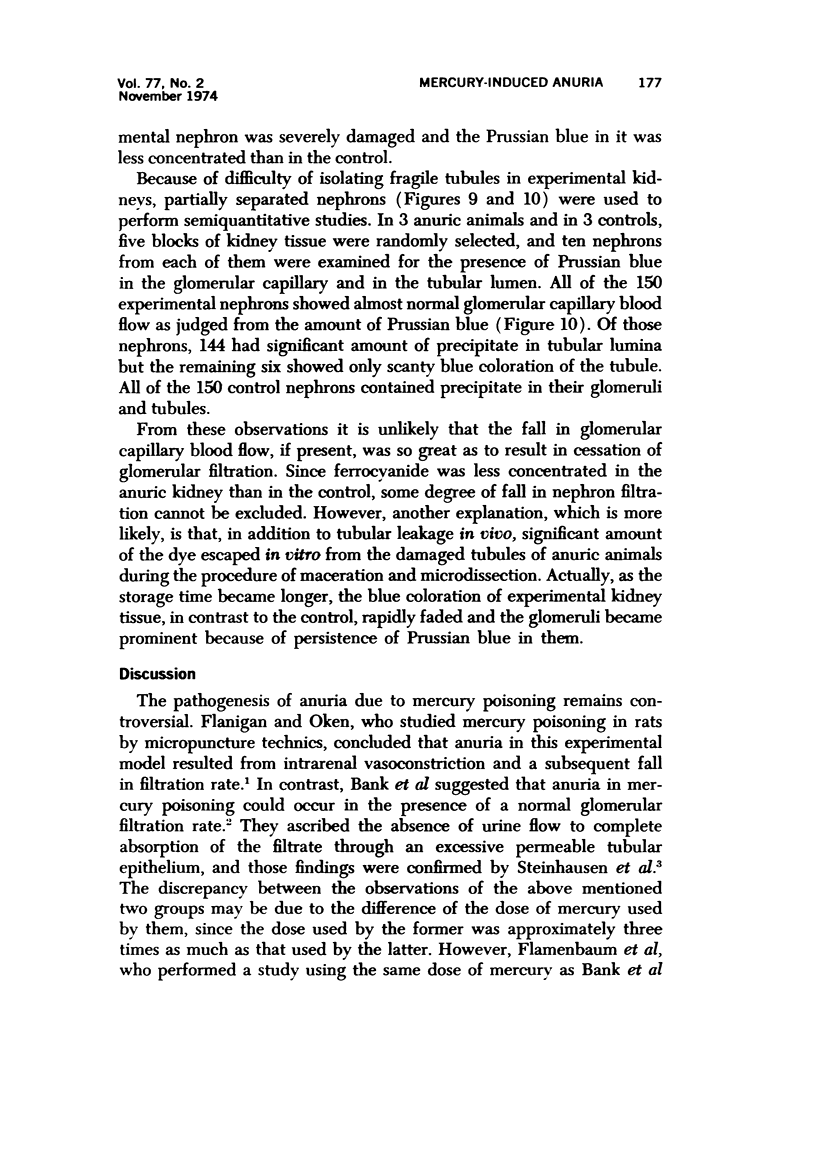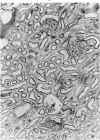Abstract
The qualitative Hanssen technic was used to study the mechanism of anuria produced in rabbits by mercury poisoning. Twenty-four to 30 hours after intravenous injection of a low dose of HgCl2, the animals were almost completely anuric. Sodium ferrocyanide injected intravenously was visualized as Prussian blue in essentially all glomeruli in anuric kidneys, and the amount of the dye in the glomerular tufts was almost the same as in control kidneys. Thus there was no evidence for a severe reduction in glomerular capillary blood flow. Besides, the distribution of Prussian blue in tubular lumina indicated that the anuria occurred in the presence of a significant glomerular filtration. Tubular walls of the anuric kidneys showed an abnormally increased permeability to sodium ferrocyanide. These findings suggested that the anuria during this stage was caused more by tubular leakage than by intrarenal vasoconstriction and subsequent cessation of glomerular filtration.
Full text
PDF








Images in this article
Selected References
These references are in PubMed. This may not be the complete list of references from this article.
- Bank N., Mutz B. F., Aynedjian H. S. The role of "leakage" of tubular fluid in anuria due to mercury poisoning. J Clin Invest. 1967 May;46(5):695–704. doi: 10.1172/JCI105570. [DOI] [PMC free article] [PubMed] [Google Scholar]
- FLANIGAN W. J., OKEN D. E. RENAL MICROPUNCTURE STUDY OF THE DEVELOPMENT OF ANURIA IN THE RAT WITH MERCURY-INDUCED ACUTE RENAL FAILURE. J Clin Invest. 1965 Mar;44:449–457. doi: 10.1172/JCI105158. [DOI] [PMC free article] [PubMed] [Google Scholar]
- Flamenbaum W., McDonald F. D., DiBona G. F., Oken D. E. Micropuncture study of renal tubular factors in low dose mercury poisoning. Nephron. 1971;8(3):221–234. doi: 10.1159/000179923. [DOI] [PubMed] [Google Scholar]
- Steinhausen M., Eisenbach G. M., Helmstädter V. Concentration of Lissamine green in proximal tubules of antidiuretic and mercury poisoned rats and the permeability of these tubules. Pflugers Arch. 1969;311(1):1–15. doi: 10.1007/BF00588058. [DOI] [PubMed] [Google Scholar]












